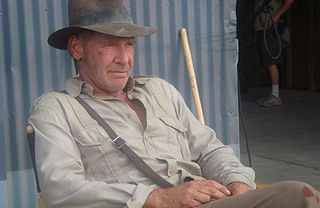
Dr. Henry Walton "Indiana" Jones, Jr. is the title character and protagonist of the Indiana Jones franchise. George Lucas created the character in homage to the action heroes of 1930s film serials. The character first appeared in the 1981 film Raiders of the Lost Ark, to be followed by Indiana Jones and the Temple of Doom in 1984, Indiana Jones and the Last Crusade in 1989, The Young Indiana Jones Chronicles from 1992 to 1996, Indiana Jones and the Kingdom of the Crystal Skull in 2008, and Indiana Jones and the Dial of Destiny in 2023. The character is also featured in novels, comics, video games, and other media. Jones is also the inspiration for several Disney theme park attractions, including Indiana Jones and the Temple of Peril, the Indiana Jones Adventure, and Epic Stunt Spectacular! attractions.

Riḥla refers to both a journey and the written account of that journey, or travelogue. It constitutes a genre of Arabic literature. Associated with the medieval Islamic notion of "travel in search of knowledge", the riḥla as a genre of medieval and early-modern Arabic literature usually describes a journey taken with the intent of performing the Hajj, but can include an itinerary that vastly exceeds that original route. The classical riḥla in medieval Arabic travel literature, like those written by Ibn Battuta and Ibn Jubayr, includes a description of the "personalities, places, governments, customs, and curiosities" experienced by traveler, and usually within the boundaries of the Muslim world. However, the term rihla can be applied to other Arabic travel narratives describing journeys taken for reasons other than pilgrimage; for instance the 19th century riḥlas of Muhammad as-Saffar and Rifa'a al-Tahtawi both follow conventions of the riḥla genre by recording not only the journey to France from Morocco and Egypt, respectively, but also their experiences and observations.

Tracy Raye Hickman is an American fantasy author and designer of games and virtual reality (VR) experiences. He co-authored the original Dragonlance novels with Margaret Weis as well as numerous other books. He also designed and created role playing game material while working for TSR and has cowritten novels with his wife, Laura Hickman. He is the author or co-author of over 60 books.
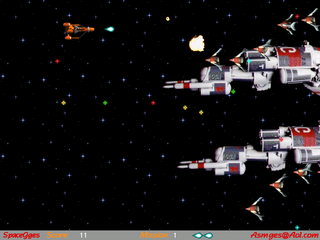
A video game genre is an informal classification of a video game based on how it is played rather than visual or narrative elements. This is independent of setting, unlike works of fiction that are expressed through other media, such as films or books. For example, a shooter game is still a shooter game, regardless of where or when it takes place. A specific game's genre is open to subjective interpretation. An individual game may belong to several genres at once.
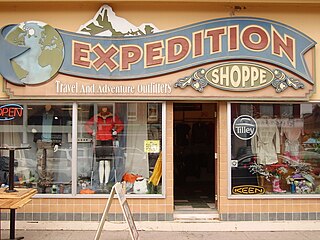
Adventure travel is a type of tourism, involving exploration or travel with a certain degree of risk, and which may require special skills and physical exertion. In the United States, adventure tourism has grown in recent decades as tourists seek out-of-the-ordinary or "roads less traveled" vacations, but lack of a clear operational definition has hampered measurement of market size and growth. According to the U.S.-based Adventure Travel Trade Association, adventure travel may be any tourist activity that includes physical activity, a cultural exchange, and connection with outdoor activities and nature.

The genre of travel literature or travelogue encompasses outdoor literature, guide books, nature writing, and travel memoirs.
Alastair Humphreys is an English adventurer, author and motivational speaker. Over a four-year period he bicycled 46,000 miles (74,000 km) around the world. He was a National Geographic Adventurer of the Year in 2012. He is responsible for the rise of the idea of the microadventure – short, local, accessible adventures.

Quest for Glory: So You Want to Be a Hero is a 1989 adventure game/role-playing game hybrid, designed by Lori Ann Cole and published by Sierra On-Line for MS-DOS. It is the first game in the Quest for Glory series, and has been credited for being a genre-defining game, as it tried to mix graphical adventure gaming with role-playing-like elements such as statistic building that would actually affect the ability to accomplish certain parts of the game. The game has a satirical and silly tone. Ports for the Amiga, Atari ST, and NEC PC-9801 were released in the early 1990s. A VGA remake, titled Quest for Glory I: So You Want to Be a Hero, was released in 1992 for DOS and later in 1994 for Mac OS.
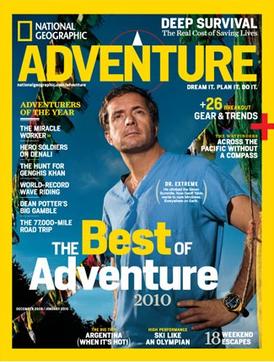
National Geographic Adventure was a magazine started in 1999 by the National Geographic Society in the United States. The first issue was published in Spring 1999. Regular publication of the magazine ended in December 2009, and the name was reused for a biannual newsstand publication. The last issue was December 2009/January 2010.
Reversal theory is a structural, phenomenological theory of personality, motivation, and emotion in the field of psychology. It focuses on the dynamic qualities of normal human experience to describe how a person regularly reverses between psychological states, reflecting their motivational style, the meaning they attach to a situation at a given time, and the emotions they experience.
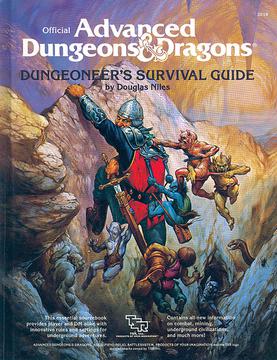
Dungeoneer's Survival Guide is a supplement to the Dungeons & Dragons fantasy role-playing game. The book was written by Douglas Niles, and published by TSR, Inc. in 1986.
Kira Salak is an American writer, adventurer, and journalist known for her travels in Mali and Papua New Guinea. She has written two books of nonfiction and a book of fiction based on her travels and is a contributing editor at National Geographic magazine.

Beatrice Ethel Grimshaw was an Irish writer and traveller. Beginning in 1903, she worked as a travel writer for the Daily Graphic and The Times, leading her to move to the Territory of Papua, where she served as the informal publicist of Lieutenant Governor Hubert Murray. Prior to her travels, she was the editor of the Social Review, publishing many of her own works under a pen name, and she had worked as a sports journalist for the Irish Cyclist. Over the course of her life, she wrote several novels, travel books, and short stories.
Sensation seeking is a personality trait defined by the search for experiences and feelings, that are "varied, novel, rich and intense", and by the readiness to "take physical, social, legal, and financial risks for the sake of such experiences." Risk is not an essential part of the trait, as many activities associated with it are not risky. However, risk may be ignored, tolerated, or minimized and may even be considered to add to the excitement of the activity. The concept was developed by Marvin Zuckerman of the University of Delaware. In order to assess this trait he created a personality test called the Sensation Seeking Scale. This test assesses individual differences in terms of sensory stimulation preferences. So there are people who prefer a strong stimulation and display a behavior that manifests a greater desire for sensations and there are those who prefer a low sensory stimulation. The scale is a questionnaire designed to measure how much stimulation a person requires and the extent to which they enjoy the excitement. Zuckerman hypothesized that people who are high sensation seekers require a lot of stimulation to reach their Optimal Level of Arousal. When the stimulation or sensory input is not met, the person finds the experience unpleasant.
An adventure game is a video game genre in which the player assumes the role of a protagonist in an interactive story, driven by exploration and/or puzzle-solving. The genre's focus on story allows it to draw heavily from other narrative-based media, such as literature and film, encompassing a wide variety of genres. Most adventure games are designed for a single player, since the emphasis on story and character makes multiplayer design difficult. Colossal Cave Adventure is identified by Rick Adams as the first such adventure game, first released in 1976, while other notable adventure game series include Zork, King's Quest, Monkey Island, Syberia, and Myst.
The term microadventure was made common by British adventurer and author Alastair Humphreys and is defined as an overnight outdoor adventure that is "small and achievable, for normal people with real lives". The New York Times described microadventures as "short, perspective-shifting bursts of travel closer to home, inspiring followers to pitch a tent in nearby woods, explore their city by moonlight, or hold a family slumber party in the backyard."

Nightmares of Futures Past is a supplement published by TSR in 1987 for the superhero role-playing game Marvel Super Heroes that describes a new dystopian setting.

Critical Role: Call of the Netherdeep is an adventure module with themes of heroism, underwater horror and fantasy. It is set in the Exandria campaign setting and designed for the 5th edition of the Dungeons & Dragons role-playing game. It was published by Wizards of the Coast and released on March 15, 2022.













